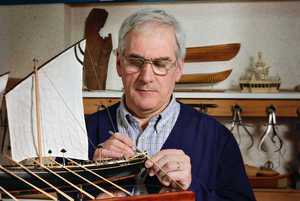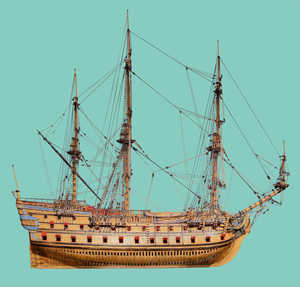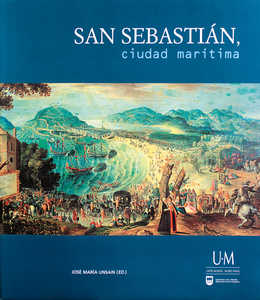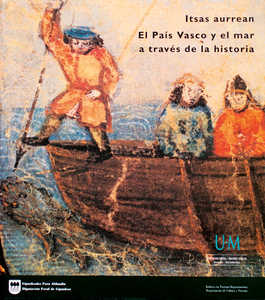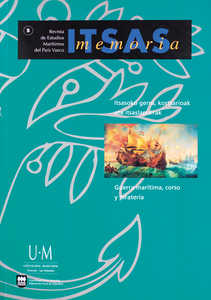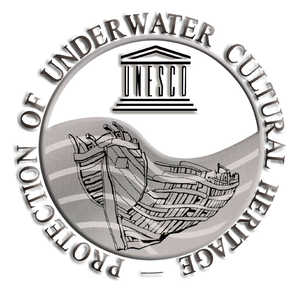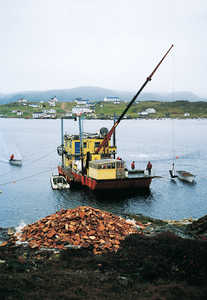Maritime heritage in Gipuzkoa
The role played by the Basques over centuries of maritime history and the technological contributions they have made are still not widely appreciated among the public. Nonetheless, some progress is being made by various agents with links to our maritime culture. The sea is the largest country the Basques have ever had, enabling us to expand and prosper. It has always been the milieu in which we have known how to express ourselves and find the solutions we needed on any occasion. By recovering this collective memory, we will come to understand that it was no coincidence that the protagonist of the most extraordinary voyage ever made was a Basque man.

The aim of the Albaola association is to disseminate and develop
maritime culture, working to recover and study the development
of Basque shipbuilding design throughout history. As well as
building vessels, it also conducts archaeological/sailing expeditions
to reconstruct the Basques’ former shipping techniques. It
takes part in meetings among maritime cultures, giving information
on our maritime identity and organising events and exhibitions for
the same purpose. © José Lopez

The Ontziola Centre for the Research and Construction of
Traditional Vessels, in Pasaia, is keeping the trade of ship's carpenter
alive. Following a painstaking process of documentation, reliable
replicas of traditional Basque vessels from different periods are
being built, using the techniques employed in the past. The activity
is open for visitors to see. © José Lopez

The Aquarium in Donostia-San Sebastian has extraordinary
facilities where items related to sea trade and traditional Basque
fishing are on display. The aquariums offer visitors a spectacular
view of marine wildlife. There is also a large collection of model
ships and fishing panoramas, as well as an interesting documentation
collection with ship-building architectural plans and publications. © José Lopez

The tuna boat "Mater" in Pasaia. Run by the Itsas Gela association,
this is a traditional tuna boat from the Bay of Biscay which
has been turned into a floating classroom. It hosts tours and educational
workshops offering information on the marine ecosystem;
visitors have a chance to learn more about an important part of our
culture. © José Lopez
For several decades, the ship modelling group of the Sociedad
Oceanográfica de Gipuzkoa has been making high-quality models of some of the most representative ships in our marine culture. In
the photo, Jesús Mari Perona puts the last touches to one of his
mo-dels.

The Untzi Museoa (Shipping Museum), located in the towerhouse
of the Consulado de San Sebastian, in the port area, does
important work in the area of Basque maritime culture. The recovery
of elements of heritage interest (including ships), educational
activities and major monographic exhibitions, as well as its numerous
publications, make it a key reference centre on the Bay of
Biscay, promoting conservation, research and dissemination of the
maritime heritage of the Basque coast. © José Lopez

The underwater research centre, INSUB has been operating
for over 30 years. It conducts research programmes, mostly, on the
Basque coast and works with similar organisations on archaeological
projects from other countries: France, the Dominican Republic,
Bermuda, Canada, the Lebanon, etc. In the picture, Manu Izagirre
at the archaeological dig of the Orio wreck, dating from the sixteenth
century. © José Lopez
Some books published by the Untzi Museoa (Shipping
Mu-seum).
Excavation of the San Juan whaler, by an underwater archaeological
team from Parks Canada. The San Juan, which sank in 1565
in Red Bay, Labrador, has become the logo for UNESCO's
Underwater Archaeology Section.

Arkeolan has played an essential role in researching and disseminating
Basque maritime heritage. The archaeological digs
carried out at the Roman port in Irun have made a major contribution
to our understanding of the marine world in ancient times,
especially in the Atlantic area. It provides technical support to
institutions, trains researchers and helps organise cultural activities
related to marine archaeological heritage, as well as participating
in specialist conferences and informative lectures. Excavation at
the Roman port of Oiasso, Irun. © José Lopez


